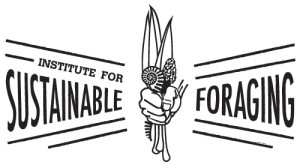THE FOREST FLOOR
Foraged goods such as ramps (wild leeks), fiddlehead ferns, a range of wild mushrooms, and other wild-crafted products are garnering wider recognition as tasty, versatile, seasonally aligned foods, and their popularity has increased dramatically. Demand from the finest chefs on both American coasts and a slew of major cities in between, as well as the changing palette of the casual consumer with a growing interest in where their food comes from, is contributing to an exponential rise in foraging of these products.
This growth in foraging for commercial–as well as personal–use, has prompted concerns about whether or not such an increase is sustainable, and whether consumers can find a means to assure themselves that these unique gastronomic delicacies are also being respected and valued for their role as key ingredients of forest ecology.
After considerable research, it was determined that unfortunately, there was no established means to determine if such goods were being sustainably harvested for the enjoyment of future generations and the ecological stability of our North American forests. Further, little research has been conducted to determine exactly what constitutes sustainable harvesting practices. Out of this concern, and the associated research gaps, the Institute for Sustainable Foraging was born.
*The Institute for Sustainable Foraging is a 501(c)3 non-profit organization.*
